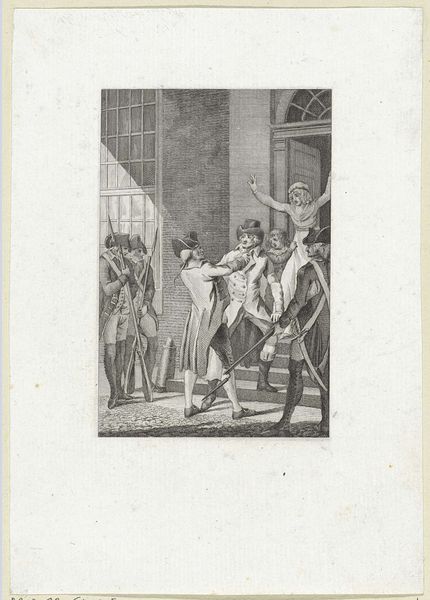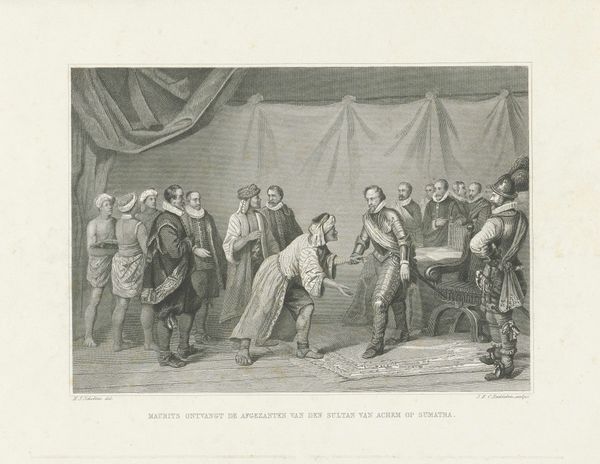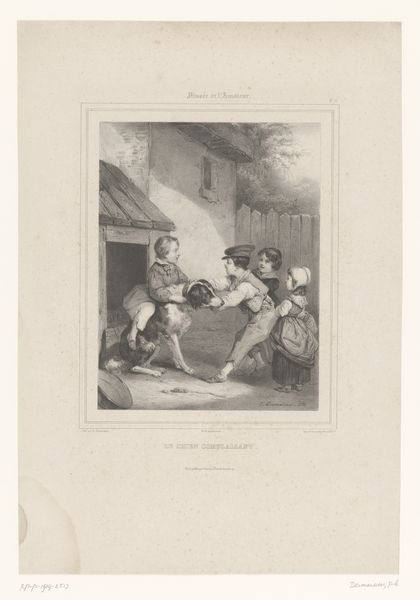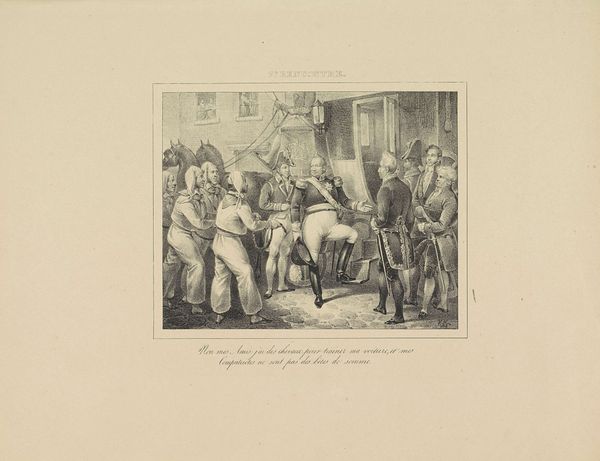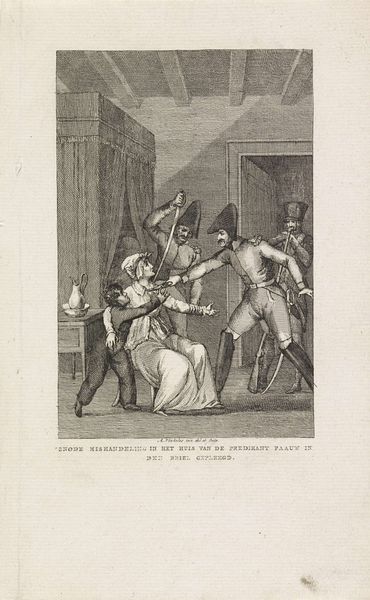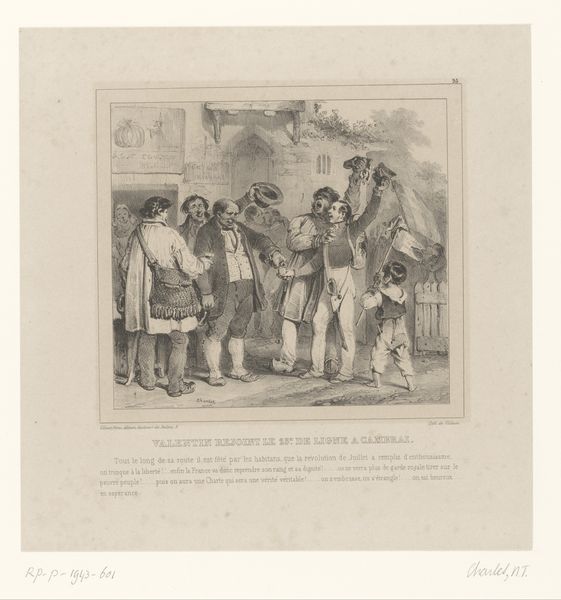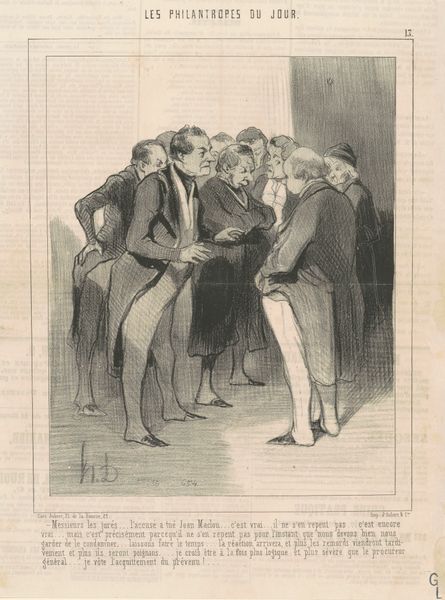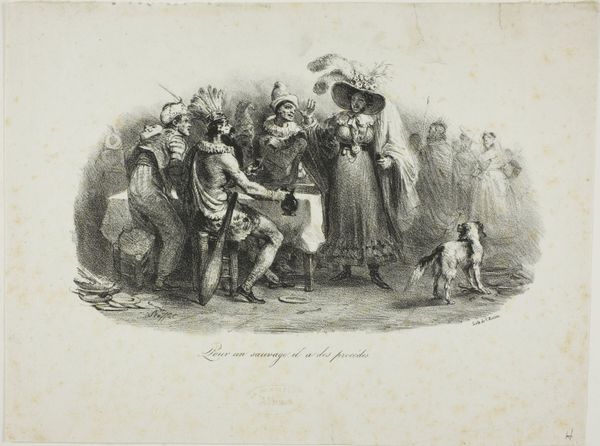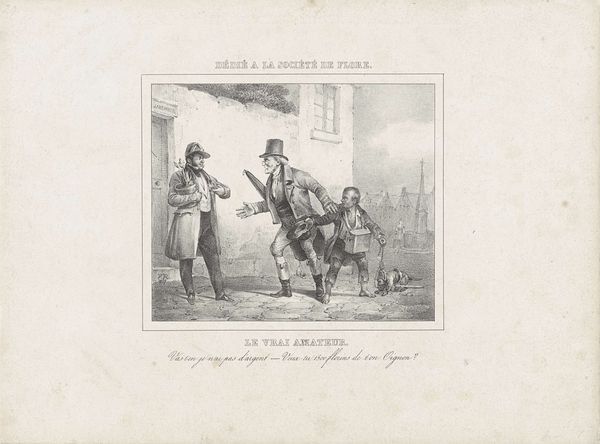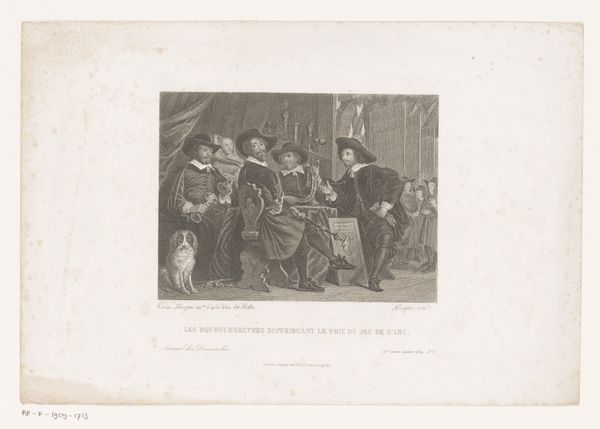
drawing, paper, ink, pen
#
portrait
#
drawing
#
narrative-art
#
classical-realism
#
paper
#
ink
#
pencil drawing
#
romanticism
#
pen
#
history-painting
#
academic-art
#
realism
Dimensions: height 235 mm, width 305 mm
Copyright: Rijks Museum: Open Domain
Editor: This pen and ink drawing, “Koning Willem I ontmoet zijn petekind,” from 1829, by Jean-Louis Van Hemelryck, feels staged, almost like a play. It's intriguing but I'm curious, what are the political undertones that might be present in an image like this? Curator: Well, considering its context, this work becomes far more than just a sentimental scene. Think about it: the House of Orange, having returned to power after the Napoleonic era, actively sought to cultivate a specific public image. This meeting between the King and his godson, likely carefully arranged and then memorialized in print, is deliberate image-making. What message do you think it conveys? Editor: Perhaps a message of approachability? The king seems to be bending down, trying to appear gentle… but maybe also a message of stability, suggesting the monarchy is ensuring continuity by supporting and embracing the next generation? Curator: Exactly! It reinforces a paternalistic image of the monarchy—caring, involved, and securing the future. But consider also how images like this circulated. Were they primarily intended for the elite, reinforcing their loyalty, or did they target a broader audience, aiming to garner popular support for the new kingdom after years of upheaval? And to what extent does the “realism” of the style mask this very carefully constructed representation? Editor: That’s a fascinating point. So, the drawing functions as a form of propaganda, carefully controlling the narrative around the monarchy? It makes you wonder how “real” the scene actually was and who the image served the most. Curator: Precisely. Looking at art through a historical lens really reveals how even seemingly simple scenes can be powerful political statements, shaping public perception. Editor: I see now, it's like looking at history through a keyhole and trying to understand the whole building! I’ll definitely approach historical art with more questioning eyes from now on.
Comments
No comments
Be the first to comment and join the conversation on the ultimate creative platform.

